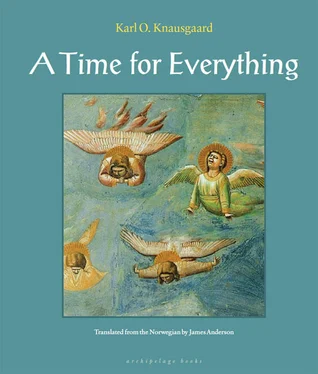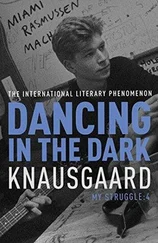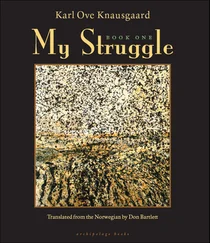How could such a concept even have emerged in a theology so focused on the body and the corporeal?
According to Bellori the answer lies in Christianity’s emphasis on Christ’s life. It was so central that all previous events involving the divine lost their intrinsic value and became ancient history. Their significance was slanted; divine revelations in the Old Testament were no longer concerned with the context in which they occurred but were viewed entirely in relation to what would happen, Christ’s arrival. It all became omen and portent. And so the divine revelations were no longer anything in themselves, they were symbols of something else, and thus, bereft of its time and its place, the divine commenced its life as symbol.
On the Heavenly and Ecclesiastical Hierarchies is incontestably the most influential single work on angels ever written. Bernard of Clairvaux, Thomas Aquinas, and Dante Alighieri are all clearly influenced by Pseudo-Dionysius the Areopagite’s theories. The main idea behind the work is that there are different categories of angels, and that these are organized within a hierarchy. There is, however, no reference to this in scripture. This notion first emerged with Ignatius of Antioch in the second century, it was repeated by Saint Ambrose in the fourth century, extended and perfected by Pseudo-Dionysius in the fifth century, and finally confirmed by Gregory the Great in the sixth century. They all operated with nine different classes of angels, and although their respective orders varied a little, it gradually became standardized, and has ever since the time of Thomas Aquinas looked like this:
THE FIRST HIERARCHY OF ANGELS
Seraphim
Cherubim
Thrones
THE SECOND HIERARCHY OF ANGELS
Dominions
Virtues
Powers
THE THIRD HIERARCHY OF ANGELS
Principalities
Archangels
Angels
Above the hierarchies God was conceived to reside, the source of all perfection, from whom the divine rays emanated, the gift of the ultimate fount, which united those who received it with his absolute wisdom and love. The seraphim, which were closest to him, were completely saturated with this divine light. The cherubim, a rung below them, got a part of surplus light, which was a mere reflection of the original, and so it went on down through the hierarchies, until the light, now a pale representation, as feeble, one might imagine, as the reflection from a snow-covered field in a forest at night, bereft of almost all its original fullness and warmth, reached the angels in the lowest hierarchy.
The problem with this model wasn’t just that the notion of a hierarchy lacked any corroboration in scripture, but also that the number of classes of angels did as well. Scripture mentions only four. The other five are mentioned by Paul but didn’t originally have anything to do with angels. From the context it is plain that in Principalities, Powers, Virtues, Dominions, and Thrones, Paul was referring to abstract phenomena and characteristics. Paul himself doesn’t use the term angels for them. So why did his successors do so? Bellori points out that the notion came about at roughly the same time as the spiritualization of the divine was beginning, and he links the two phenomena. If there were absolutely abstract, bodiless creatures within the order of angels, it would be easier to believe the notion that the other, scripturally concrete angels actually were abstract and bodiless.
Pseudo-Dionysius must have believed that God and his angels, as they appeared in the Old Testament, weren’t dignified enough with all their eyes, wheels, wings, flames, and shining metal bodies, and so tried to elevate them by making their all-too-terrestrial appearance into a symbol of their ethereally beautiful inner selves, at the same time organizing the chaotic and erratic nature of their actions into a simple, clear, exquisite, and rigid system. By adorning God in this manner, he and his like set themselves above God, and although this is both outrageous and unforgivable, it isn’t difficult to understand. In a culture that not only distinguished between the material and immaterial sides of reality but also believed that the former was a manifestation of the latter and always set the abstract higher than the concrete, the spiritual higher than the physical, the invisible higher than the visible, the God described in the Bible, with his obvious human characteristics, must have seemed like a kind of distortion of the divine. The idea that God, the very principle of existence, the eternal, limitless, and all-encompassing power, the fount and ultimate aim of all things, should have taken a stroll in the garden in the evening breeze, as it says in Genesis, could hardly have been something the first Christians relished. It was presumably why all these extraordinarily complex processes were set in motion. Almost everything tangible concerning the divine became, over the course of a few centuries, abstract; almost everything physical, spiritual. The consequences of this work were greatest within the Greek-speaking realm, where the divine was exiled to an obscurity beyond understanding and language (which would eventually lead to the Eastern Church’s mystical divine image) and ultimately teetered on the edge of an abyss of meaninglessness because the inevitable conclusion of negative, apophatic theology is that God is a non-God, his existence a nonexistence. But their massive reforming work also left its mark on the Latin realm’s theology, where God, like his angels, is represented as pure spirit — without physical dimension, omnipresent and boundless, omnipotent and unchanging.
But what if the circumscribed is divine? What if the variable is divine? What if the improvised, the intuitive, the capricious, and the never-quite-finished are divine? The brutal and frank? Anxiety, longing, indignation, hate? The childlike pleasure in things that shine?
Bellori doesn’t go this far. He is content with pointing out the indisputable fact that the Lord appears in human guise in the Bible. It cannot have been an infinite and bodiless God who was walking in the garden at the time of the evening breeze . Nor could it have been an omnipotent and all-knowing spirit that called out to Adam and asked what he’d done, or who sat down and stitched clothes for the human beings after cursing them. Nor could it have been an eternal and bodiless God who smelled the soothing odor of Noah’s offering, as is described in Genesis chapter eight, and who immediately regretted that he had sent the great flood over the earth.
Doesn’t God’s statement Let us make man in our image and likeness indicate that there must be some sort of connection between the divine and the human?
Didn’t Ezekiel describe God as a form in human likeness ?
What is noteworthy is not Bellori’s underlining of the Lord’s human characteristics, but the great theologians’ repudiation of them. It is hard to imagine, as Bellori said, that God and his divine creatures would exist without any sort of link with the human, raised completely over matter, as Thomas Aquinas and like minds maintained. As far as they were concerned, God in all his forms was absolute — absolute purity, absolute enlightenment, absolute perfection — but just what that absolute really was, or how it really developed, apart from being like light, is unknown. But because God in this way is defined as everything man is not, and never can be, it’s easy to accept it and believe that things really are that way, and that this abstract God is the true God, when really it’s the opposite: the abstract God is the more human, precisely because it equates with mankind ’s concept of what the most beautiful, the most elevated, and the most perfect is.
Читать дальше












